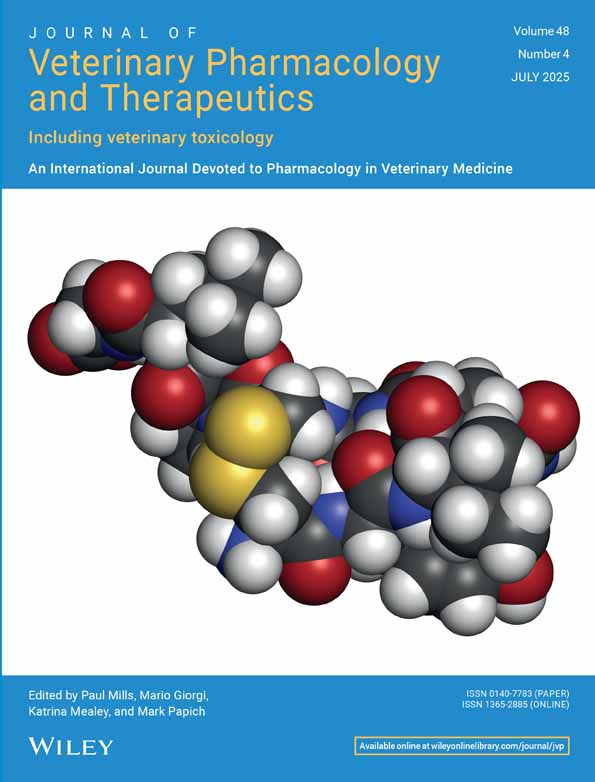α1-acid glycoprotein and serum binding of drugs in healthy and diseased dogs
Abstract
Belpaire, F.M., De Rick, A., Dello, C., Fraeyman, N. & Bogaert, M.G. apacid glycoprotein and serum binding of drugs in healthy and diseased dogs. J. vet. Pharmacol. Therap. 10, 43–48.
Inter-individual variation in drug serum protein binding was studied in healthy dogs and in dogs with inflammatory diseases for lidocaine, oxprenolol and propranolol, which bind mainly to α1-acid glycoprotein (α1-AGP), and for diazepam, digitoxin and phenytoin, which bind mainly to albumin. For the drugs mostly bound to α1-AGP, in both groups of dogs binding varied considerably, and it was markedly higher in dogs with inflammatory disease. For the other drugs, the variation in binding was smaller and did not differ between the two groups of dogs. In both groups of dogs, the α1-AGP concentration varied widely; it was higher in the serum of the dogs with inflammation, while the concentration of albumin was lower in these animals. There was a significant negative correlation between percentage free lidocaine, oxprenolol or propranolol and α1-AGP concentration, suggesting that the inter-individual variation in binding of these drugs is due to the variation in α1-AGP concentration. There was a marked intra-individual variation in lidocaine binding and in serum α1-AGP concentration, studied over a period of 3 weeks in healthy dogs; a significant negative correlation between percentage free lidocaine and α1-AGP concentration was obtained.




